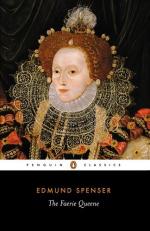|
This section contains 610 words (approx. 2 pages at 400 words per page) |

|
Sixteenth century: In 1517, Martin Luther's actions grow into the Protestant reformation. This event has important ramifications for England, when King Henry VIII seeks a divorce from his wife. When the Pope refuses to grant a divorce, the king declares himself as leader of the English church. This act, in 1534, creates the Anglican Church and establishes Protestantism as the official church. In effect, it also outlaws the Roman Catholic Church, since Henry seizes all church property, using it as a source of revenue. Spenser uses this history to depict Una as Truth, the Anglican Church. Duessa represents falsehood, the Roman Catholic Church, which is attractive on the outside, but corrupt on the inside. This illustrates the English notion that Catholicism was all about performance and ornamentation and lacking substance inside.
Late twentieth century: In many ways, the English still view the Catholic Church with suspicion...
|
This section contains 610 words (approx. 2 pages at 400 words per page) |

|




